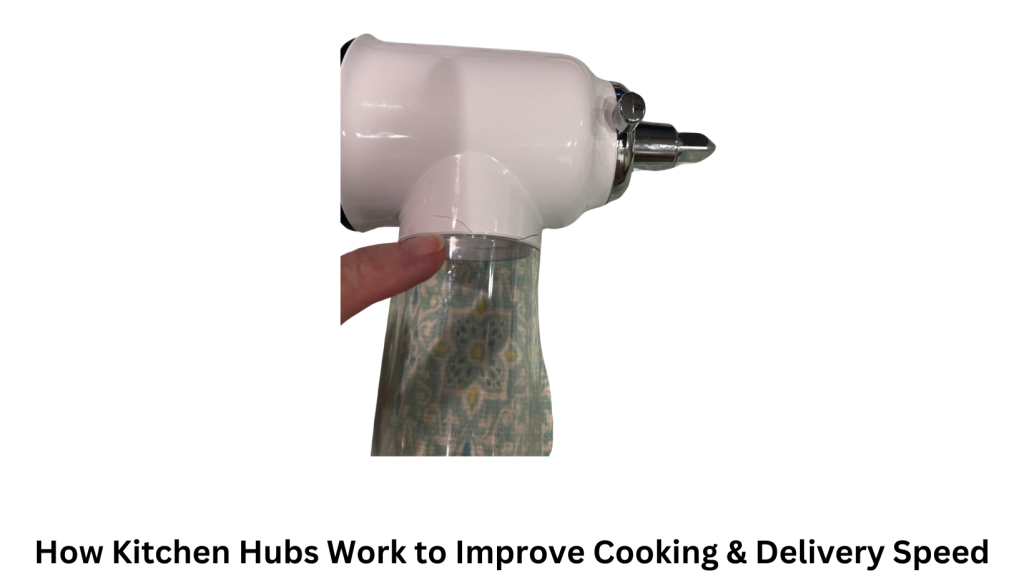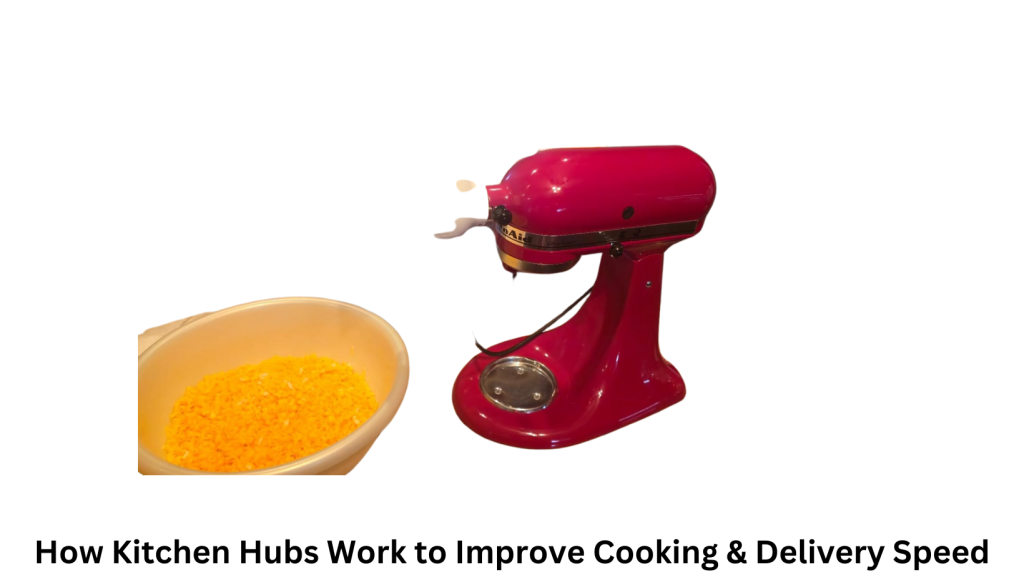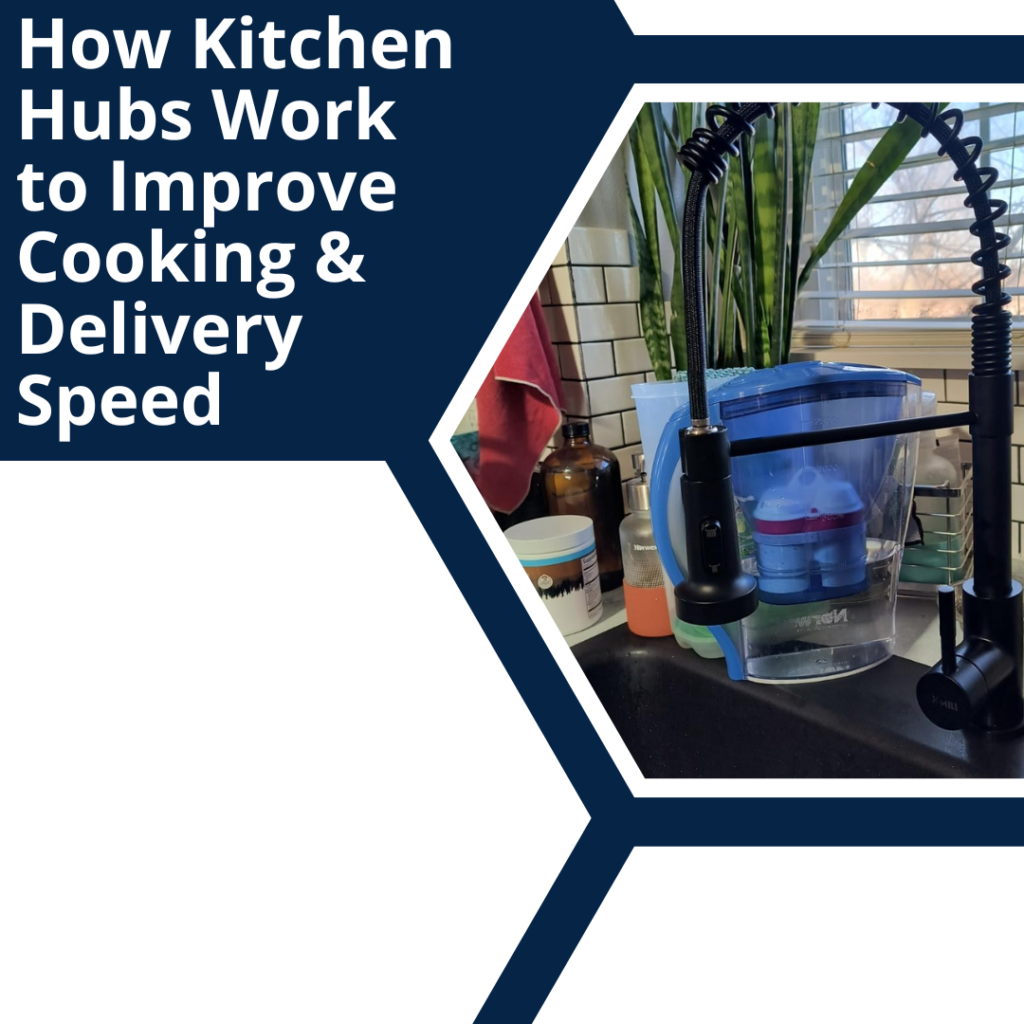Do you ever feel like juggling cooking, cleaning, and managing your kitchen is a never-ending task? You’re not alone! Keeping everything in order while preparing meals can feel overwhelming, especially when time is short, and there’s so much to do.
Many people struggle with staying organized and efficient in the kitchen. Recipes get misplaced, appliances feel underutilized, and the chaos can make meal prep stressful instead of enjoyable.
This is where a kitchen hub can be a game-changer. In this post, we’ll walk you through how a kitchen hub works and how it simplifies your daily cooking routine. You’ll discover how this smart solution can save you time, keep your kitchen organized, and make cooking more fun.
Understanding the Kitchen Hub
Imagine a tool that makes your kitchen smarter and more efficient. That’s what a kitchen hub does. But what exactly is it? A kitchen hub can mean different things depending on how it’s used.
For home use, a kitchen hub is like a command center. It’s usually a smart device that connects all your kitchen appliances. With it, you can control your oven, refrigerator, and even your dishwasher from one place. This setup makes cooking and cleaning easier by saving time and effort.
In the food delivery world, a kitchen hub is something else. It’s a shared kitchen space where multiple food brands prepare their meals for delivery. For example, companies like DoorDash use kitchen hubs to make their operations faster and more organized. Instead of each restaurant needing its own space, they share one central kitchen.
Kitchen hubs are not like traditional setups. At home, they make smart appliances work together. In delivery, they improve efficiency by focusing on speed and sharing resources. Both types of kitchen hubs are designed to save time, reduce stress, and make life easier.

How a Kitchen Hub Works
A kitchen hub might sound complex, but its purpose is simple: to make life easier. It works differently depending on whether it’s a smart kitchen hub or a cloud kitchen hub.
A smart kitchen hub is a device that connects all your smart appliances. Imagine controlling your oven, refrigerator, and even your lights from one screen. For example, systems like HomeKit allow you to set your oven’s temperature while checking what’s inside your fridge—without opening the door. The kitchen hub acts as the brain, making appliances work together smoothly.
In contrast, a cloud kitchen hub is a shared space used by restaurants or food brands. These hubs are designed to prepare meals for delivery. Instead of having their own kitchen, several brands use the same location. This setup saves space and simplifies delivery logistics. Drivers can pick up orders quickly because everything is organized in one place.
How DoorDash Kitchens Operate
DoorDash Kitchens provide a smart solution for restaurants. Instead of needing their own kitchen space, restaurants rent shared kitchens from DoorDash. These spaces are fully equipped and ready for food preparation.
Restaurants don’t have to worry about high rent or building their own kitchens. By sharing a central space, they save money and focus on what they do best—making great food. This setup also helps with delivery. Since the kitchens are designed for quick operations, orders are prepared and handed off to drivers faster.
Another benefit is location. DoorDash places these kitchens in areas with high delivery demand. This means food gets to customers quicker, improving the overall experience. For restaurants, it’s a way to expand without taking on huge costs. For customers, it means hot meals delivered faster.
How HomeKit Hub Enhances Your Kitchen
Apple HomeKit provides users with intelligent and efficient home control for their kitchen. This smart system provides users with command capabilities through their iPhone or iPad or voice access through Siri.
With HomeKit, automation becomes simple. The system allows you to program the cooking timer with automatic light dimming when the timer starts. The kitchen temperature can be adjusted whenever your oven is in preheat mode. Your shopping trip becomes easier because you can review your fridge contents remotely through this device.
The system enables users to generate unique scenes through its interface. Users can develop a “Dinner Time” setting through the system platform. The lighting adjusts plus music starts playing and oven heat-ups after one touch operation. HomeKit functions as the system which maintains all devices in alignment during operation.
How Grubhub Ensures Your Food Stays Warm
The delivery service at Grubhub maintains food quality through advanced temperature management solutions. The insulated bag stands as the most widely used delivery method. The insulated bag functions to both contain heat within and shield your food from diminishing in temperature over transit periods.
Larger orders are usually transported in heated vehicle compartments used by drivers. The compartments preserve proper temperature levels throughout food delivery until the time of final delivery. Extended travel durations do not degrade food quality due to specific quality control measures.
Fast delivery methods prove essential for the business. The swift operation of order pickup and delivery services by Grubhub reduces the total period between cooking completion and delivery to customers. Your order reaches you hot since the delivery process minimizes waiting time.
The kitchen hubs work to speed up delivery operations. Quick food preparation takes place in centralized efficient facilities which decrease delivery time from kitchen to customer. Freshness and warmth are achieved in customers’ meals due to Grubhub’s delivery methods. Through its strategic tools and procedures Grubhub maintains food delivery quality to meet your preferences exactly.

Common Questions About Kitchen Design and Usability
The choice between knobs or handles for kitchen cabinets stands as the central design issue for many homeowners during kitchen planning. Your personal taste as well as requirements shape your decision between knobs and handles for kitchen cabinets.
Knobs are simple and traditional. Because of their small size knobs provide an excellent solution for cabinetry especially in classic and minimalistic design styles. Knobs have easy installation requirements together with various style options. Heavy drawers tend to work better with handles due to their comfort factor.
Handles serve to create an up-to-date aesthetic design. The size of these fixtures is well-suited for drawers and bigger cabinets because they provide superior gripability. Handles enable superior grip control thus becoming handy when dealing with wet or unclean hands. The main drawback of handles is their large dimensions which make them incompatible with particular design aesthetics.
Kitchens equipped with technology can effectively use both knobs and handles at their hub. agaist a modern contemporary setting which includes intelligent appliances either handles should be selected. A combination of traditional style with integrated technology can work best with knobs installed on cabinets. You should achieve harmony between practicality and design elements while building your kitchen space.
Benefits of Kitchen Hubs
Kitchen hubs bring many advantages, whether in homes or businesses. They make tasks easier, save time, and improve efficiency.
For food delivery services, kitchen hubs increase speed and organization. By preparing food in one central location, orders are completed faster, and delivery times are reduced. Customers get their meals quicker and fresher.
In smart homes, kitchen hubs simplify how appliances are used. You can control your oven, refrigerator, and even lights with one device. This saves effort and lets you focus on cooking or spending time with family.

For restaurants, cloud kitchen hubs help save money. Instead of renting a big space, multiple brands can share one kitchen. This reduces costs and uses space wisely. It also makes it easier for businesses to expand to new areas without high risks.
Kitchen hubs are changing how we work and live, making life smoother and more convenient for everyone.
Future of Kitchen Hubs
The upcoming phase of kitchen hubs continues to develop through numerous prominent modern cooking and eating directions.
The integration of AI represents one of the emerging industry trends. Smart kitchen hubs utilizing AI technology will start to guess your upcoming cooking requirements. Your kitchen hub might offer recipe recommendations based on food items present in the refrigerator also send preparatory reminders based on chosen recipes.
The delivery system infrastructure has been significantly transformed into the future. New drone technology will enable people to receive their food directly from cloud kitchen locations. The efficient delivery system will enable faster delivery while making services even more time-efficient for customers.
More attention has begun to focus on sustainability functions. Cooking facilities across the city will adopt sustainable operational standards. The platform incorporates energy-saving equipment into their kitchens while the package delivery system employs environmentally friendly packaging materials and staff practice minimal food waste management.
Conclusion
Kitchen hubs are changing how we manage our kitchens, both at home and in the food service industry. In smart homes, they make managing appliances easy and efficient, while in restaurants, they streamline food preparation and delivery.
These hubs are making kitchens smarter and more connected. They help save time, improve food quality, and make the entire cooking and delivery process more efficient.
As technology continues to advance, kitchen hubs will play an even bigger role in our daily lives. They are leading the way toward more efficient, convenient, and high-tech kitchens, both at home and in the food service world.

I’m a writer and culinary expert with over 10 years of experience in the kitchen. As a graduate of the Institute of Culinary Education and a passionate home chef, I created KitchenBreez.com to share my knowledge of kitchen techniques, cooking tips, and the best kitchen gadgets. Whether you’re a seasoned cook or just starting, my goal is to help you make your time in the kitchen more efficient and enjoyable.
